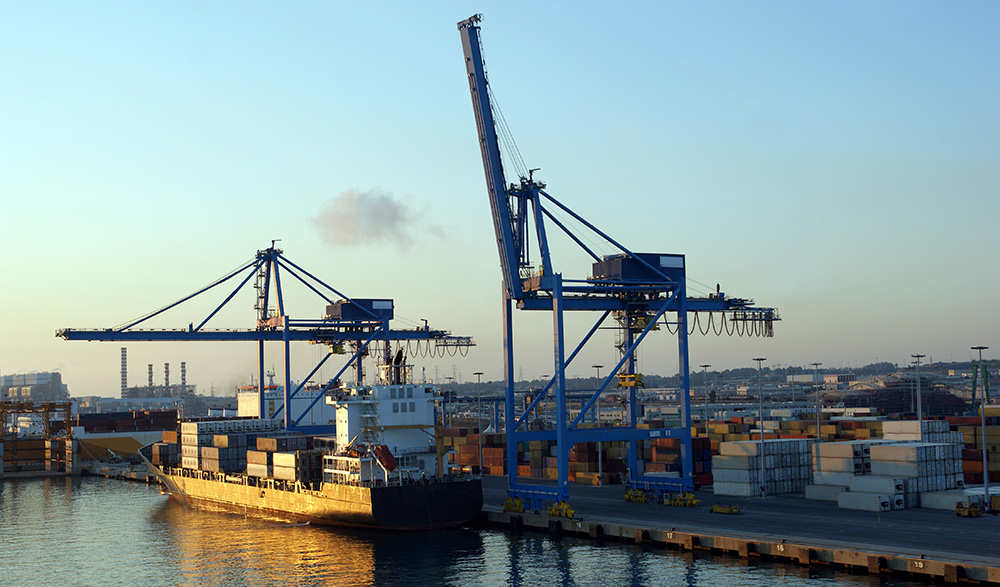The 12th Inland Terminals conference, run by Management Producties, was held in Rouen, France in November. With participants ranging from intermodal terminal operators, shippers, suppliers, and government stakeholders, the presentations and ensuing discussions proved to be engaging and insightful.
All up, there were a couple of keywords that permeated several of the formal and informal conversations: Blockchain and the Physical Internet. What was more interesting is that, for a room full of seasoned industry professionals, both of these ideas were relatively new to most of the participants. In a show of hands, well over half of the room had not heard of the Physical Internet. Yet, by the end of the conference, many agreed that it would be an essential conceptual model that could reshape the logistics industry in the coming years and decades (this was a matter of debate). As these concepts were new, let us review each of these keywords again in a bit more detail.
Blockchain
In Alex Van Breedam’s opening remarks, he noted that Blockchain was going to be significant; so what is it? At a high level, Blockchain is a protocol for creating a single, shared ledger of transactional data that is secure and can’t be altered. It enables proof of ownership and secure transfer of ownership while recording details into a distributed ledger. In theory, implementing a Blockchain reduces duplication of data, speeds up transaction times, and removes data errors resulting in increased efficiencies for all parties involved. Many logistics industry professionals agree that Blockchain is set to shake up the status quo. And this has already begun; earlier this year, the first logistics based Blockchain pilot program was conducted through a combined effort from IBM and Maersk.
In fact, at the conference, in Alexandre Berger’s presentation on Carrefour’s roll cage traceability project, he noted that tracking roll cage assets throughout the network was resolved using a Blockchain solution. Blockchain will only continue to grow in its applications in the logistics industry. The interesting twist will be whether any standard for intermodal and maritime container terminals will evolve or whether Blockchains will be developed in silos across the industry.
The Physical Internet
Of the four topics covered in more detail here, the Physical Internet was perhaps the most discussed throughout the conference. Eric Ballot, in the Paris Innovation Review, sums it up nicely, “In simple words, the Physical Internet is applying the principles of the Internet to logistics. A global, open, interconnected network, using a set of collaborative protocols and standardized smart interfaces, in order to send and receive physical goods contained in standard modules…”. At its core, the Physical Internet is about “collaboration” and “coopetition”; buzzwords I’ve heard at logistics conferences around the world throughout 2017.
During his presentation, Eric delved into greater detail on the role intermodal terminals could play in this new networked approach to logistics – albeit at a theoretical level. In short, the presentation and discussions on the topic at the conference reinforced the same point raised in a review published in June 2017 that found, “There is a lack of understanding of the business models needed that can involve critical actors and promote the adoption of the [Physical Internet] concept.” As a theoretical model for moving toward a collaborative logistical model, the Physical Internet is a strong candidate. However, it currently lacks the ability to be translated into the business world, and as such, will continue as a concept until such a translation can be resolved.
Wrapping it up
It is interesting to compare and contrast both Blockchain and the Physical Internet. On the surface, they are similar in that they both are concepts that will change the way intermodal terminals operate in the future – this tells me that terminal operators, government, and suppliers are all concerned with what the future holds. At the same time, the two concepts are different. Blockchain has managed to cross the theoretical barrier and is now starting to see adoption across the logistics industry while the Physical Internet has not. That said, while Blockchain is being implemented in limited projects, it is doing so mainly in silos, at a time when most industry professionals agree that collaboration and coopetition are the models of business we should move to for future success (re-queue conversation on the Physical Internet).
The take-away? As an industry, the container terminal industry (including maritime, intermodal, and rail operators) need to begin working together to find a way to translate the Physical Internet from a theoretical concept into business models. It is a long road, but as my mother used to say, the sooner you get started, the sooner you get there.
Were you at the Inland Terminals conference in Rouen? Did I miss something you felt was an important topic?
Header photo: Gstrau/shutterstock.com

